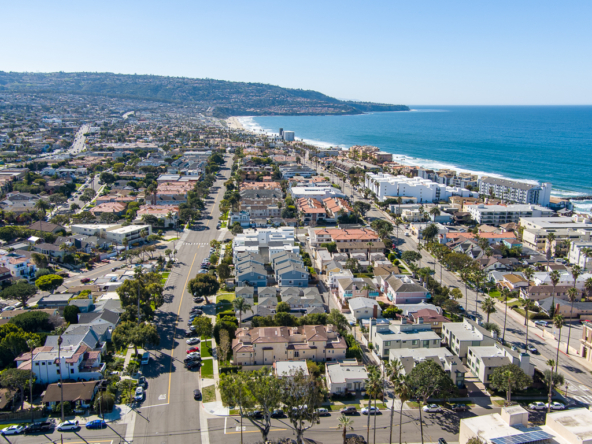Warning, if you don’t like charts and numbers, you might not like this post. . . . my apologies. As a trained accountant, I like numbers. I like charts even more. Recently, I’ve been reading about and starting to notice a little change in the real estate market. While the entry level price point in most neighborhoods is still white-hot with busy open houses and multiple bids, the top end of the market is not nearly as crazy. In fact, there are signs that prices may have hit their peak.
With all the data available, how can we measure craziness? I like to look at absorption rate, measured as months supply, to gauge the temperature of the market. In the chart below, I assumed $2 million and above represents the top of the market. Now this may be more mid-market in Manhattan Beach, but in Palos Verdes Estates, Redondo Beach, and Hermosa Beach, this is somewhat of a dividing line in the single-family real estate market. The chart below shows that compared to a year earlier, the months supply has increased by at least 30%. In the 4 cities in the chart, this is a direct result of inventories in the $2m plus price range nearly doubling, while the number of closed sales remains mostly flat.
Using the same examples as above, but looking at the price range of $1.5-1.999 million, it’s a different story. Month’s supply in this price range has dropped, year-over-year, to 2 months supply or less. Certainly, rising prices hasn’t helped categorically, but I think the reality of there being more buyers than supply of homes is a better explanation for the drop. The other thing to consider is that in this price range, many homeowners are more likely to be longer term owners and less likely to be looking to move, therefore supply is restricted in this category.
The same goes for the $1.2m to $1.499m price range. Like its cousin above, month’s supply hasn’t changed much on a year-over-year basis. Again, this suggests there are far more buyers in this price category relative to the current supply. I suspect that the multiple bids and heavy competition will continue in this price range until there is a significant change in the market or interest rates jump significantly.
There are some obvious things to point out in all of the charts above. First, there is market seasonality. As we are currently starting to see, there is typically more inventory in the spring and summer months compared to winter and fall, usually dropping to a low around the holidays. I expect that trend to continue this spring and summer; however, it will be interesting to see what happens. For now, interest rates are low so that should continue to motivate active buyers. But what I am really curious to see is if the high end market plateaus, and if it will it spread to the lower price categories? It’s anyone’s guess, and at some point, it’s going to happen. When is the big question. . . .


